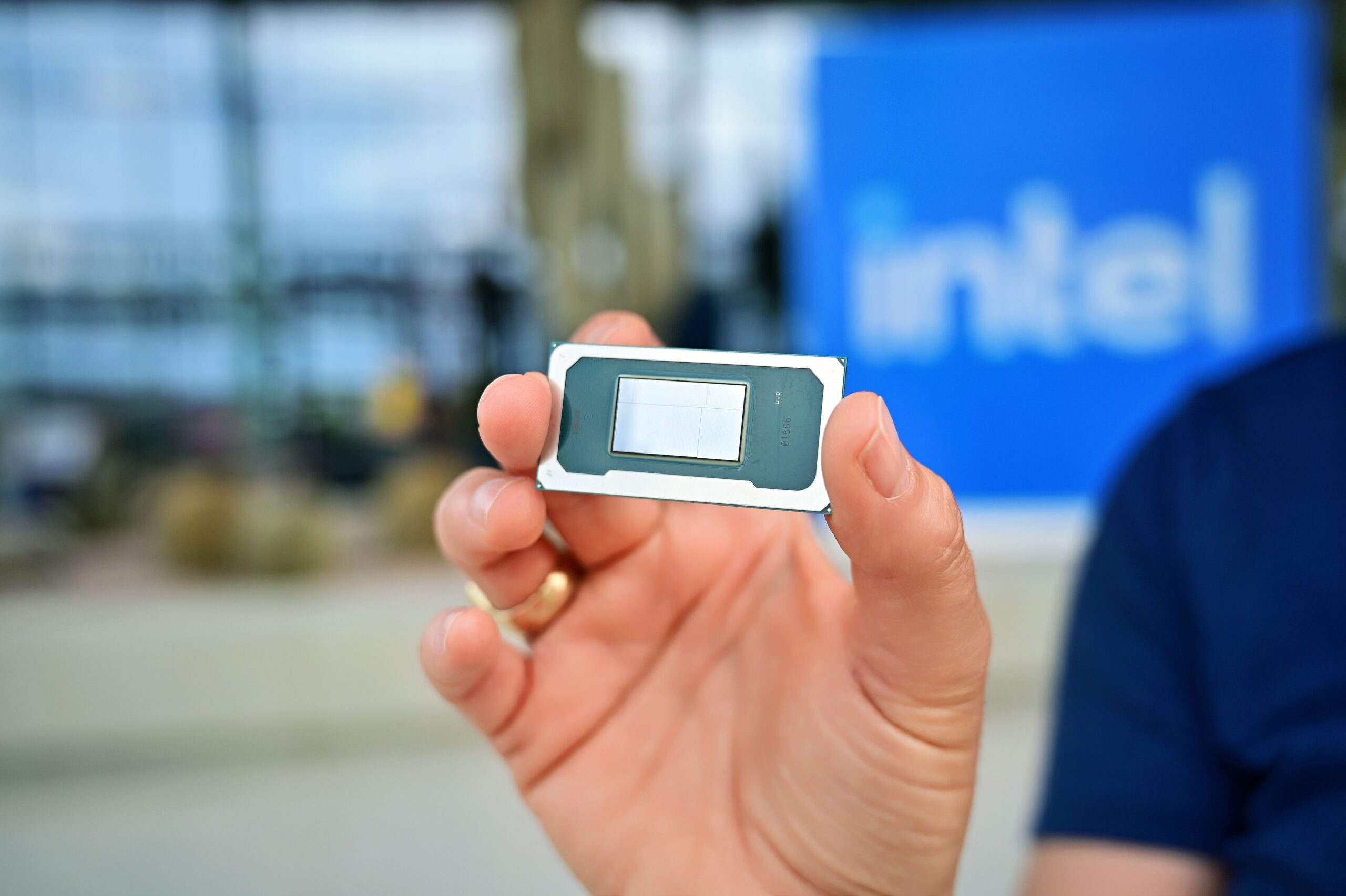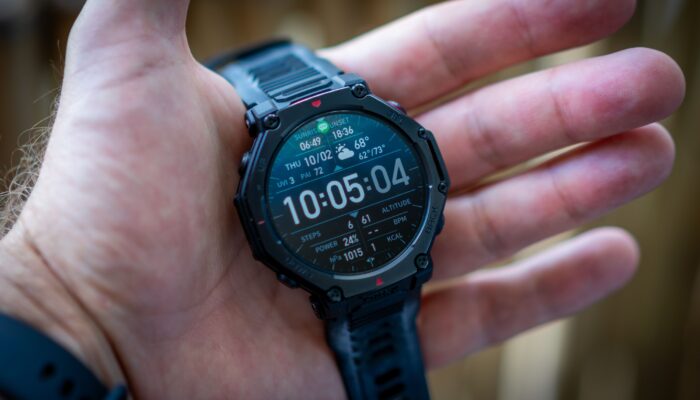All products featured on WIRED are independently selected by our editors. However, we may receive compensation from retailers and/or from purchases of products through these links. Learn more.
Intel’s future has never seemed so uncertain. But most of the company’s roller-coaster ride of a year has been a lead-up to its next-gen CPU launch, announced this week. The chips will be known as Intel Core Ultra Series 3, codenamed Panther Lake, and they’re being manufactured in its new Arizona-based fabrication plant.
Intel claims the first configurations will ship before the end of the year and then more broadly starting in January 2026. We don’t have a complete lineup yet, but Panther Lake will include up to 16-core CPUs with a “more than 50 percent faster CPU” performance over the previous generation. Intel claims that the new integrated GPU with have up to 12 GPU cores that are also 50 percent faster than the prior generation, boosted by a new architecture.
Intel is fighting back against the stiff competition. Qualcomm dramatically entered the Windows laptop race in 2024 with its Arm-based, highly-efficient Snapdragon X chips, doubling the battery life of current Intel-powered laptops in some cases. While Intel was able to respond to the battery-life competition with its Core Ultra Series 2 V-series chips in late 2024, performance took a hit on these laptops, and the efficiency only applied to flagship, thin, and light laptops. Budget-level and high-performance laptops used a different architecture and therefore didn’t get that same bump in efficiency.
That made shopping for a laptop in 2025 even more head-scratching than normal. These next chips will attempt to fix this problem, with the company promising “Lunar Lake–level power efficiency” and “Arrow Lake–class performance.” Intel really needs to achieve that promise, because with Qualcomm’s Snapdragon X2 Elite having just been previewed and the Apple M5 on the way, the stakes keep rising. —Luke Larsen
Apple’s Next Hardware Launch Is Coming Soon

Tim Cook on stage during the Apple Keynote on September 9, 2025.Photograph: Julian Chokkattu
If you’re thinking, didn’t Apple just have an event? Yes, the company debuted new iPhones, Apple Watches, and AirPods just last month. But rumors are heating up that the company will announce more products this month, focused on iPads and MacBooks. That’s not unusual, as the company has held October events for the past few years, usually for the tablet and Mac lineups. It’s unclear whether this will be an actual event or a silent launch via press release. The company has done both in the past.
So what can you expect? The marquee announcement will revolve around the anticipated M5 chipset, which may debut inside a new MacBook Pro and the iPad Pro. The flagship tablet likely won’t look or feel too different from the prior M4 version. MacBooks are a little more up in the air on launch timing; it could be at this event or early in 2026. If they are announced, it’ll be a new 14- and 16-inch MacBook Pro with an M5, M5 Pro, and M5 Max chip. Apple has also reportedly been gearing up for a budget MacBook launch powered by an iPhone processor, but this may arrive early in 2026 instead.
Other hardware that may debut at this October event includes a new Vision Pro powered by an M4 or M5 chip with a comfier head strap, though it’s otherwise the same as the original headset. There may be a new Apple TV with a faster chipset, the new version of Siri (though this won’t come until 2026), and Wi-Fi 7 support. And we may finally see a second-gen AirTag, with a longer range.
The PlayStation 6 May Arrive in a ‘Few Years’
Sony published a video to its PlayStation YouTube Channel this week featuring Mark Cerny, the lead architect of the PS5, and Jack Huynh, AMD’s senior vice president. It’s largely technical, digging into graphics technology that the two companies are jointly developing.
One of the concepts touched on is Neural Arrays, which Cerny says will “allow us to process a large chunk of the screen in one go,” which could lead to a dizzying number of improvements that the pair rattled off. However, the focus was on “brand-new [machine learning]-powered features.”
The most exciting bit of the video is toward the end, when Cerny says it’s still early days for the technologies but that he’s “really excited about bringing them to a future console in a few years’ time.” The tease isn’t surprising: The PlayStation 5 is in the second half of its lifecycle, considering it has been on the market since 2020.
While a PlayStation 6 may be expected, the gaming industry has been facing several upheavals, with studio closures and mergers. Microsoft is trying to put its Xbox platform on as many screens as possible, rather than focus on its own dedicated hardware. And there has been a renewed focus on handheld consoles due to the success of the Nintendo Switch (and now the Switch 2). This raises the question of where the PS6 is headed. While leaks suggest Sony is rumored to be working on its own handheld, Cerny and Huynh’s deep focus on next-gen graphics strongly implies that the PlayStation 6 will be a traditional home console.
Meta’s Smart Glasses Are Hard to Repair
.jpg)
Courtesy of iFixit
While the new Meta Ray-Ban Display glasses may be the most advanced smart glasses yet, it turns out their repairability leaves a lot to be desired. In fact, iFixit found very little in them that could be repaired.
Considering these glasses are meant to be worn regularly, it’s going to be perfectly feasible for you to go through several of the six-hour battery cycles a week—and that will wear the battery down faster. The problem is, Meta has made it extremely difficult to replace the battery here (not to mention that it hasn’t made a replacement available yet), with lots of glue used and no easy way of resealing the glasses arm once you perform a repair. iFixit calls the amount of adhesive used here “overkill,” and that extends to other components in the glasses’ arms, like the speakers.
Add all that to the fact that replacing a scratched lens here is next to impossible, due to the amount of tech piled into the right lens at least, and that makes the Display’s $800 price feel all the more expensive should something go wrong. —Verity Burns
The Pixel Watch 4 Earns a 9/10 in Repairability
.png)
Photograph: Julian Chokkattu
In more repairability news, iFixit has deemed the Pixel Watch 4 as “the most repairable smartwatch” it has seen. It’s not surprising—we got an early look at how easy it is to replace the display and battery of the Pixel Watch 4 in August—but it is a complete 180 considering the last three generations of Pixel Watch were not repairable at all. (Google would just send replacement units instead of attempting a repair.)
For context, the Apple Watch Series 10 earned a 3/10; iFixit has not published a teardown of the Series 11 yet. It’s a big win for repairability, especially considering people don’t upgrade smartwatches as quickly as they do their smartphones. The screen and battery are often the two most common repairs, and this new capability allows folks to hold onto their Pixel Watch 4 even longer. Google says spare components will be available at iFixit for purchase.
Logitech’s Pop Buttons Are Popping Into the Trash
Logitech’s Pop switches remind me of the early thrill of smart-home technology. Launched in 2016, they provided physical access to smart-home commands, like a smart switch, but you could attach any command to them instead of just light control. Unfortunately, Logitech says all Pop buttons and the connected hub will no longer be supported on October 15; they will lose all functionality.
Logitech has offered Pop customers a 15-percent-off coupon for Logitech products as a recompense but has limited what the coupon can be used for. It’s disappointing to see yet another product turn into e-waste, though it effectively closes the door on Logitech’s smart-home ambitions. —Nena Farrell




